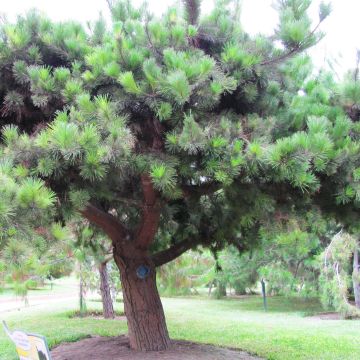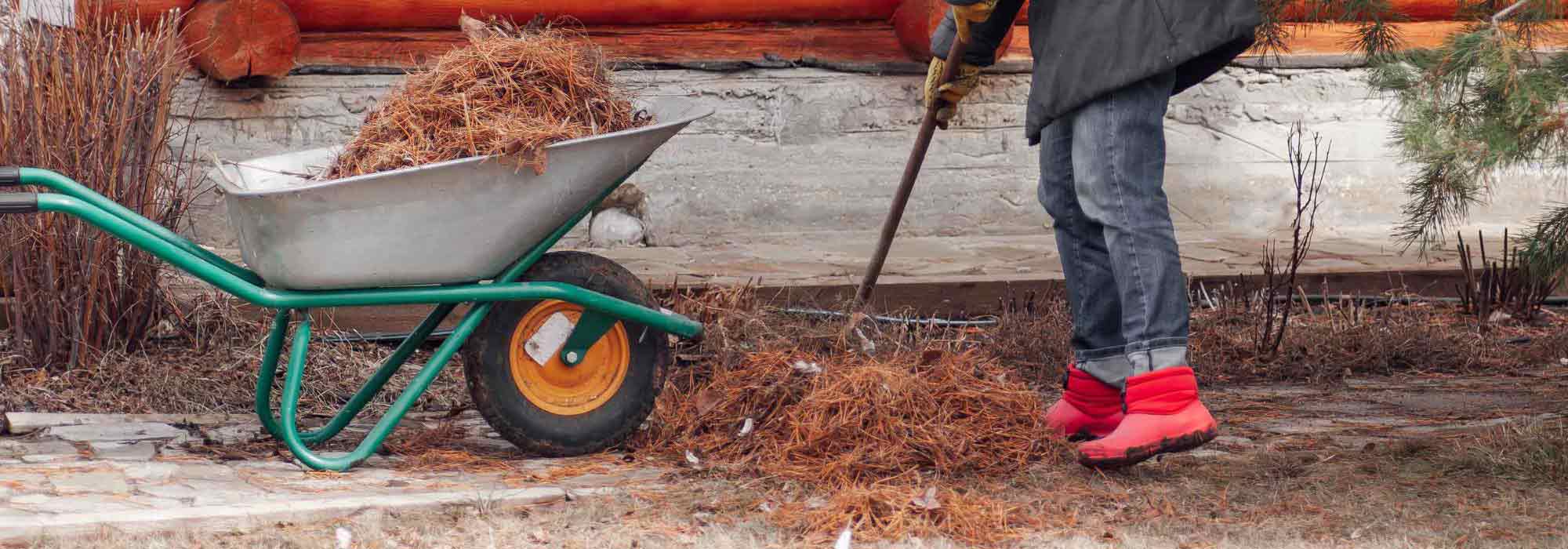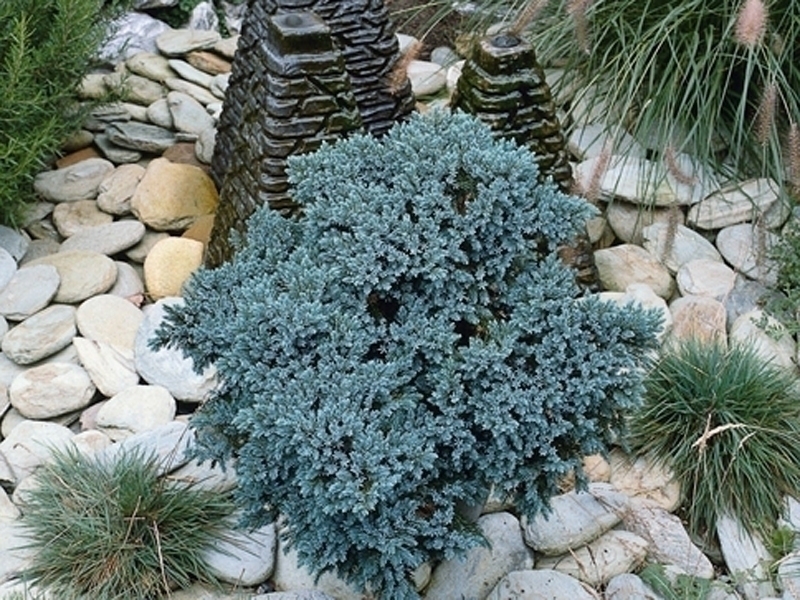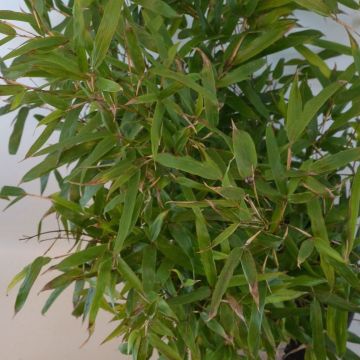

Pinus mugo Lilliput - Pin de montagne
Pinus mugo Lilliput - Dwarf Mountain Pine
Pinus mugo Lilliput
Dwarf Mountain Pine, Swiss Mountain Pine, Mugo Pine
Very beautiful young plant received, planted right away. 1 year later, it is still as beautiful and the shoot is growing well.
Pierre, 30/07/2021
Special offer!
Receive a €20 voucher for any order over €90 (excluding delivery costs, credit notes, and plastic-free options)!
1- Add your favorite plants to your cart.
2- Once you have reached €90, confirm your order (you can even choose the delivery date!).
3- As soon as your order is shipped, you will receive an email containing your voucher code, valid for 3 months (90 days).
Your voucher is unique and can only be used once, for any order with a minimum value of €20, excluding delivery costs.
Can be combined with other current offers, non-divisible and non-refundable.
Home or relay delivery (depending on size and destination)
Schedule delivery date,
and select date in basket
This plant carries a 24 months recovery warranty
More information
We guarantee the quality of our plants for a full growing cycle, and will replace at our expense any plant that fails to recover under normal climatic and planting conditions.

Would this plant suit my garden?
Set up your Plantfit profile →
Description
Pinus mugo 'Lilliput' forms a small prostrate hemispherical bush, it is a low-maintenance miniature mountain pine that fits anywhere in the garden or on the terrace. Its small branches, resembling brushes, are densely covered with short, dark green needles. Due to its excessively reduced growth and very slow growth, it is perfectly suited for a small garden, will liven up the rockery or make a statement in a pot on the terrace. It is an extremely hardy conifer that does not require pruning. It is content with any well-drained but moist soil, and a sunny exposure. This variety dislikes excessively hot and dry climates.
Pinus mugo, also called mountain pine, is an evergreen conifer from the pine family endemic to the mountains of Europe. It is found in the subalpine zone, avoiding the summer heat, from the Spanish sierras, through the high Alpine and Pyrenean massifs, to the Balkans. It only descends to an altitude of 200m (656ft) in central Europe. In nature, it slowly reaches 3 to 4 metres (10 to 13 feet) in all directions, adopting a windswept silhouette that reflects its habitat. It is a very hardy species, well adapted to mountain climates.
The 'Lilliput' variety, as its name suggests, is distinguished from the wild species by its very small size, and by its almost prostrate hemispherical habit. Its growth is slow, and decreases even more on individuals over 15 years old, so that in the long run, it will not exceed 1m (3ft) in height and 1.50m (5ft) in spread at the base. Its branches are covered with dark green, short and slender needles, 3 to 4cm (1 to 2in) long, grouped in pairs and arranged in brushes. The young shoots emerge in spring from light brown and resinous buds. On its trunk, the bark is brownish-grey, while it shows a green and shiny, then black, colour on the branches.
The dwarf mountain pine 'Lilliput' will find its place in a small garden, isolated, in a bed or rockery. It can also be used in a large pot on the terrace or balcony. It works wonders in a Japanese garden, and goes well with large rocks, geometric lines of pools, and masonry works. It can be associated with complementary grasses or with dwarf conifers with a prostrate habit (Juniperus horizontalis 'Blue Chip'), globose (Picea abies 'Little Gem'), or columnar (Juniperus communis 'Sentinel'). The real graphic qualities of conifers naturally impose themselves in the design of a contemporary garden, which prefers the aesthetics of forms, silhouettes, and textures to the dance of flowering. These plants with their reassuring permanence structurally define a bed, mark the pathways, border the terrace, easily replacing the strong presence of trimmed boxwood or holly. The key is to play with volumes and colours.
Pinus mugo Lilliput - Dwarf Mountain Pine in pictures




Plant habit
Foliage
Botanical data
Pinus
mugo
Lilliput
Pinaceae
Dwarf Mountain Pine, Swiss Mountain Pine, Mugo Pine
Cultivar or hybrid
Other Pinus - Pine
View all →Planting and care
Pinus mugo 'Lilliput' can be planted from September to November and from February to June in well-drained, moist, even poor soil, whether it be limestone or, on the contrary, peaty and acidic. It only fears soils that are too dry in the summer and scorching temperatures. Choose a sunny spot or, at worst, semi-shaded. Soak the root balls well before planting. Optionally, add organic amendment to the planting and water generously in the first few years, and in case of prolonged drought. You can apply a special conifer fertilizer every year in April and weed the soil in summer. This very hardy conifer (down to at least -30°C (1°F)) does not need pruning.
Planting period
Intended location
Care
Planting & care advice
-
, onOrder confirmed
Reply from on Promesse de fleurs
Similar products
Haven't found what you were looking for?
Hardiness is the lowest winter temperature a plant can endure without suffering serious damage or even dying. However, hardiness is affected by location (a sheltered area, such as a patio), protection (winter cover) and soil type (hardiness is improved by well-drained soil).

Photo Sharing Terms & Conditions
In order to encourage gardeners to interact and share their experiences, Promesse de fleurs offers various media enabling content to be uploaded onto its Site - in particular via the ‘Photo sharing’ module.
The User agrees to refrain from:
- Posting any content that is illegal, prejudicial, insulting, racist, inciteful to hatred, revisionist, contrary to public decency, that infringes on privacy or on the privacy rights of third parties, in particular the publicity rights of persons and goods, intellectual property rights, or the right to privacy.
- Submitting content on behalf of a third party;
- Impersonate the identity of a third party and/or publish any personal information about a third party;
In general, the User undertakes to refrain from any unethical behaviour.
All Content (in particular text, comments, files, images, photos, videos, creative works, etc.), which may be subject to property or intellectual property rights, image or other private rights, shall remain the property of the User, subject to the limited rights granted by the terms of the licence granted by Promesse de fleurs as stated below. Users are at liberty to publish or not to publish such Content on the Site, notably via the ‘Photo Sharing’ facility, and accept that this Content shall be made public and freely accessible, notably on the Internet.
Users further acknowledge, undertake to have ,and guarantee that they hold all necessary rights and permissions to publish such material on the Site, in particular with regard to the legislation in force pertaining to any privacy, property, intellectual property, image, or contractual rights, or rights of any other nature. By publishing such Content on the Site, Users acknowledge accepting full liability as publishers of the Content within the meaning of the law, and grant Promesse de fleurs, free of charge, an inclusive, worldwide licence for the said Content for the entire duration of its publication, including all reproduction, representation, up/downloading, displaying, performing, transmission, and storage rights.
Users also grant permission for their name to be linked to the Content and accept that this link may not always be made available.
By engaging in posting material, Users consent to their Content becoming automatically accessible on the Internet, in particular on other sites and/or blogs and/or web pages of the Promesse de fleurs site, including in particular social pages and the Promesse de fleurs catalogue.
Users may secure the removal of entrusted content free of charge by issuing a simple request via our contact form.
The flowering period indicated on our website applies to countries and regions located in USDA zone 8 (France, the United Kingdom, Ireland, the Netherlands, etc.)
It will vary according to where you live:
- In zones 9 to 10 (Italy, Spain, Greece, etc.), flowering will occur about 2 to 4 weeks earlier.
- In zones 6 to 7 (Germany, Poland, Slovenia, and lower mountainous regions), flowering will be delayed by 2 to 3 weeks.
- In zone 5 (Central Europe, Scandinavia), blooming will be delayed by 3 to 5 weeks.
In temperate climates, pruning of spring-flowering shrubs (forsythia, spireas, etc.) should be done just after flowering.
Pruning of summer-flowering shrubs (Indian Lilac, Perovskia, etc.) can be done in winter or spring.
In cold regions as well as with frost-sensitive plants, avoid pruning too early when severe frosts may still occur.
The planting period indicated on our website applies to countries and regions located in USDA zone 8 (France, United Kingdom, Ireland, Netherlands).
It will vary according to where you live:
- In Mediterranean zones (Marseille, Madrid, Milan, etc.), autumn and winter are the best planting periods.
- In continental zones (Strasbourg, Munich, Vienna, etc.), delay planting by 2 to 3 weeks in spring and bring it forward by 2 to 4 weeks in autumn.
- In mountainous regions (the Alps, Pyrenees, Carpathians, etc.), it is best to plant in late spring (May-June) or late summer (August-September).
The harvesting period indicated on our website applies to countries and regions in USDA zone 8 (France, England, Ireland, the Netherlands).
In colder areas (Scandinavia, Poland, Austria...) fruit and vegetable harvests are likely to be delayed by 3-4 weeks.
In warmer areas (Italy, Spain, Greece, etc.), harvesting will probably take place earlier, depending on weather conditions.
The sowing periods indicated on our website apply to countries and regions within USDA Zone 8 (France, UK, Ireland, Netherlands).
In colder areas (Scandinavia, Poland, Austria...), delay any outdoor sowing by 3-4 weeks, or sow under glass.
In warmer climes (Italy, Spain, Greece, etc.), bring outdoor sowing forward by a few weeks.



























































